by Dr. Anderson Reynolds & Alexander Clarke
As mentioned in our previous piece on the Youth Economy (Taking Stock), given the dire unemployment and social-ills plight of our young people, it is heartening that the Philip J. Pierre government is focusing attention on the Youth Economy. And it is particularly pleasing, and uplifting, even, to hear the prime minister and other government ministers talk about the necessity of preserving our cultural heritage and the role culture can play in helping to forge our national identity, in buttressing our self-esteem and dignity, and in eroding our self-contempt, which Barbados prime minister, Mia Mottley, reckons is the source of many of the region’s intractable problems.

Here are the prime minister’s fighting words on the subject, delivered as part of his 2021 Emancipation Day address to the nation.
“…This government will make the first of August a major event in our national calendar. Our self-esteem, our dignity, our respect for the lives and struggles of our forefather’s demand this of us… we also need to remind ourselves that we have to fight against attitudes that belittle our patrimony and cultural heritage whenever and wherever they exist. As one people we are to respect our patrimony and observe our cultural heritage. The government of St. Lucia will always support the preservation of our heritage… this government will take steps to ensure that the African, Caribbean, and St. Lucian history is taught at all levels of our schools, we will also examine the possibilities of making creole an official language of our country…We pledge to fight against the mental, economic, and social attitudes that remind us of the terrible days of slavery and fight for a truly democratic society and equal opportunity for all…”
In this the second part of our narrative on the youth economy we will focus on culture as an engine of economic growth, or the potential of the cultural industry to stimulating economic expansion.
Brief Description of The St. Lucia Cultural Industry
The UK government department for culture, media and sport (DCMS) describes the creative industries as “those industries which have their origin in individual creativity, skill and talent and which have a potential for wealth and job creation through the generation and exploitation of intellectual property.” As such, according to the DCMS, the creative industries include advertising and marketing, architecture, crafts, design (product, graphic and fashion design), film and video, television and radio, photography, IT, software and computer games, publishing, museums, galleries and libraries, music, performing and visual arts.
However, in terms of the creative or cultural industries, for purposes of this discourse we will be focusing on activities that involve the creation or production of goods and services that are cultural in nature (cultural products), which invariably are protected by intellectual property rights. These would include music, literature/publishing, fashion, crafts, film/video, performing arts (theatre, dance), and visual arts (drawing, painting, photography, sculpture).
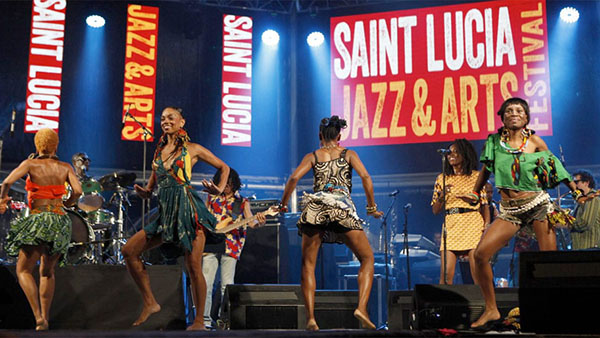
The St. Lucia music industry is being driven by the hotels, cruise ships, the soca/calypso/carnival enterprise, the St. Lucia Jazz and Arts Festival, and Jounen Kwéyòl festivities. St. Lucian musicians earn income from music sales and royalties and from performing at hotels, cruise ships, private functions, and at concerts and other public events. With four or more engagements per week, musicians can earn from about EC$2500 to EC$10,000 per month on the hotel circuit. The cruise ship musicians make at least EC$5000 monthly. Besides the bands and solo musicians/artist, the industry includes song writers, recording studios, sound systems, and show promoters/organizers. In terms of training and structure, the St. Lucia School of Music, the St. Lucia Police Band, the calypso tents, and the music programs of various schools such as those at secondary schools culminating in CXC examinations can also be regarded as part of the music industry. Of the arts, the music sector is arguably the most developed, yet St. Lucia remains to produce an artist of the international popularity enjoyed by the likes of Rihanna and some of the Jamaican reggae stars. Such an accomplishment would likely give the St. Lucia music industry an uplift. St. Lucia’s biggest musical exports for the past several years appears to be Ronald Boo Hinkson, Teddyson John, and Ricky “Ricky T” Joseph.

The literature/publishing sector mainly involves the publishing of books, magazines, and newspapers. There are no traditional book publishers in St. Lucia. Most authors are self-published. The domestic market for St. Lucian books is limited. It doesn’t help that there are virtually no traditional or dedicated book stores on island. For most books, after the initial launch domestic sales usually dwindle to a trickle. Unlike some of the musicians, St. Lucian authors cannot live off their writing.
Notwithstanding, with such recent cost-effective innovations as eBooks and print-on-demand, St. Lucians are publishing more books than ever before. The domestic and diaspora market is still the captive market for St. Lucian books. The challenge in St. Lucia and the diaspora is one of reaching readers and making the books readily accessible for purchase. The diaspora must be viewed as an extension of the domestic market. There is also a need to grow the market by inculcating the habit of reading among school children. Another challenge is to broaden the appeal of St. Lucian books beyond St. Lucian nationals and visitors to the island. Notwithstanding, for some books the visitors’ market (online stores, the St. Lucian diaspora, giftshops at airports, hotels, and cruise ship docks) holds untapped potential.

The film, animation, and video production sector primarily involve television news coverage, commercial ADs, event coverage, and documentaries. The film/movie sector is poorly developed and there isn’t a steady flow of productions. However, there are a few notable, ongoing film enterprises. Iyanola Pictures, the brain child of actress and movie maker, Mathurine Emmanuel, has four movies under its belt, and will be releasing its fifth movie, Shantaye’s World, later in the year. The creole comedy drama group, Ché Campeche, has staged a string of hit productions, popular both in St. Lucia and the diaspora, which besides live performances are released as videos. The Independent Film Company and host presenter, Dale Elliott, have created quite a stir with their provocative investigative documentary series, Untold Stories. St. Lucian born UK theatre, television and film actor, Marcell Joseph, best known for his role as a butler on The Fresh Prince of Bel-Air, is perhaps St. Lucia’s most famous actor/actress. However, Gabrielle Ryan, also a St. Lucian born UK national, who plays Portia in the Neflix series, Bonding, is growing in popularity.
Dance and theatre in St. Lucia have come in fits and starts. Productions are sporadic. Ché Campeche is one of the few theatre/drama undertakings that seems to have enjoyed consistent financial success. Dance and theatre are two of the artforms in greatest need of public support for their viability. However, the value of dance and theatre cannot be overestimated. Often a theatrical production encompasses all of the other artforms and thus serves as a springboard for the arts in general. It is by no coincidence that both Iyanola Pictures and Ché Campeche arose from community drama groups (Adventist Church). Theatre was the main plank of the 1950s St. Lucia Arts Guild that sparked a cultural renaissance and out of which emerged St. Lucia’s most renowned cultural creators.

St. Lucia has produced several internationally acclaimed visual artists, including painters Sir Dunstan St. Omer, Llewellyn Xavier, and Cedric George; and sculptors Jallim Eudovic, Vincent Joseph Eudovic, and Ricky George. The market for paintings and sculptures is driven mainly by the patronage of commercial houses, government, and visitors. The Choiseul crafters are famous for fashioning household items out of clay, straw, and other indigenous material for both the domestic and visitors’ market. Most other crafters specialize in ornamental artefacts with a focus on the visitors’ market. Despite the advent of the ubiquitous cell phone, professional photography is still in demand for official documents, commercial purposes, special events, and the capturing of special moments.
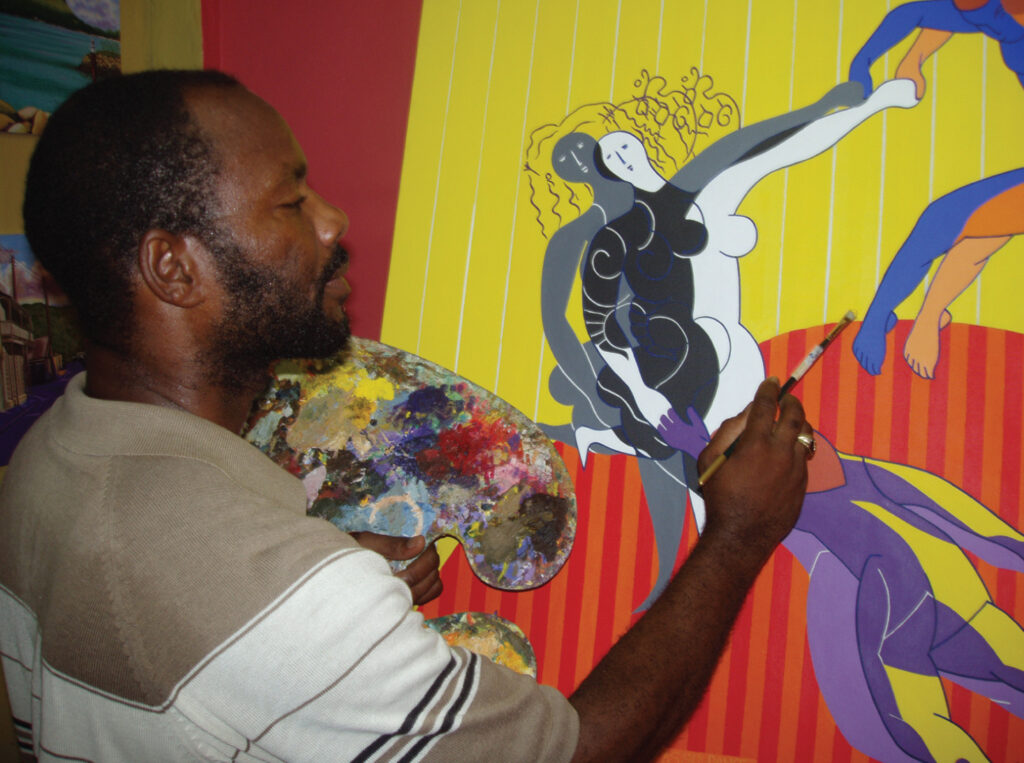
Economic Potential of the Cultural Industry
The global entertainment and media industry is estimated at over US$2 trillion a year, making it the world’s 30th largest industry. Yet the dollar value doesn’t tell the whole story because the influence, respect and recognition that a country gains through the export of its cultural products and entertainment services is disproportionate to the monetary value of such exports. Consider, for example, that the greatest influence America may have on the world was achieved not by its military might or its financial aid, but by the export of its way of life, its culture: music, books, movies, television, fast foods, etc.
In 2000 Jamaica’s music industry was estimated to account for 10 percent of the country’s GDP and US$60 to US$100 million of its exports. Significant dollar numbers for Jamaica, but in terms of the world economy a drop in a bucket. However, the same cannot be said of the influence of reggae and Jamaican music on world culture and the recognition and status and visitor-pull that music has brought Jamaica. Conceivably, the impact of Jamaican culture on the world is disproportionate to its size or the dollar value of its cultural industry. In fact, between reggae and its derivatives and calypso and soca and their accompanying carnival festivals, for some time now there has been no less than a Jamaicanization or more generally a Caribbeanization of world culture.

The revenue and brand-power potential of the creative industry should be encouraging to small nation states like St. Lucia with a paucity of resources because here is a sphere of activity that isn’t heavily dependent on economies of scale and in which the main ingredient isn’t overwhelmingly that of financial resources. Moreover, continuing advances in music, video, computing, publishing, and cinematic technology are making the creation and production of quality cultural products increasingly affordable and within the means of small economies. The large number of both developed and less developed countries contributing quality movies to Netflix is a case in point.
The beauty about cultural products like books, music, and film is that, in the advent of globalization and the worldwide web, once these products are in place they face a potential market of about eight billion people. Furthermore, once there continues to be a demand for the product, production and sales can continue into perpetuity (case in point, Bob Marley’s music). At sufficient volumes, even if net profits from the sale of any one unit is only a fraction of a dollar, cents even, total profit could still amount to millions of dollars.
Often times all it takes is for one song, one book, one piece of painting or one movie to achieve prominence. Because once this one song or book, etc., achieves financial success, all previous and subsequent works of that author are likely to acquire greater demand and value. But it doesn’t stop there. Sometimes all what it takes for the world to come to the doorsteps of a country for a particular cultural export, musical performers, for example, is for one national of that country to make a name on the world stage.
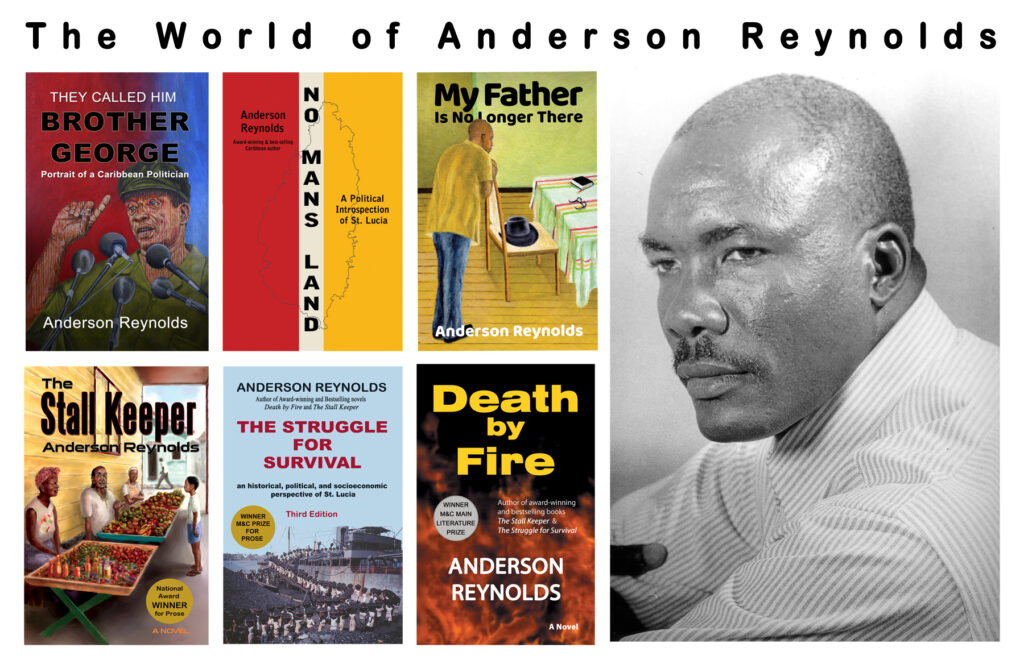
Given the upside employment and income potential of the cultural industry and that our youths are naturally drawn to sports and artistic and cultural expressions, the government cannot go wrong with the pairing of the youth economy with the cultural industry. Indeed, we can think of the four pillars of the youth economy as sports, culture, entrepreneurship, and education and training.
However, a fair question at this point is that if the entertainment and cultural industry can be so lucrative why do our youth, our artist, need financial and other kinds of support from the government and business houses? The rewards to be had should be motivation enough for artists to bring their craft to international standards, and to produce cultural products for the world market.
The problem is that a lot has to happen before the artist arrives at a level where his craft is on par with international levels. And even when his craft is as good as what is obtained anywhere else, a lot has to happen in terms of packaging, marketing, promotion and publicity before the art can enter the shop windows of the world. Very often it takes years of working at her craft before the artist can arrive at an acceptable level, and sometimes many more years before the artist’s work catches the imagination of the public. What often happens is that the artist’s home market is sufficiently large to allow the artist to live off her creativity, even while developing her craft, and there is a well-developed structure to take the artist from one stage of development to another, and, once the artist has reached the required level of development, to bring the artist to the attention of the world.

Ronald Boo Hinkson 
Ricky T 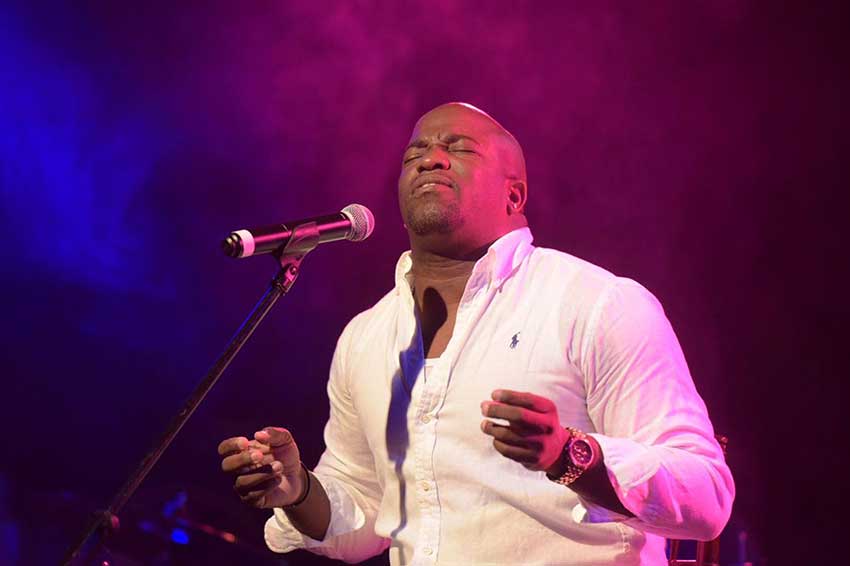
Teddyson John
On the contrary, one reality of small economies like St. Lucia is that the market is too small to fully support artists. Too few books, handicrafts, or paintings get sold to allow the artist to recoup cost much less to earn a living. Similarly, there are too few shows, concerts and theatre productions, and the performance fee of musicians, actors, directors, etc., is too paltry to allow them to live off their performances and productions. If not for the hotel and cruise ship industry, there would hardly be a band in St. Lucia. So much so, that show me a band without hotel gigs, and I will show you a band that doesn’t exist. For these reasons businesses are reluctant to invest in the creation of cultural products, and many artists trade their craft for gainful employment long before they have reached internationally competitive levels. Among those who continue to produce, few invest the amount of time and resources required to create at international standards.
These realities contribute to and are compounded by the fact that there is a serious lack of structure as far as St. Lucia’s cultural industry is concerned. There is a deficit of artist management, booking agents, publicists, promoters, record labels, art galleries, theatres, production houses, book publishers, book stores, etc., the very institutions, facilities, and processes that are required to nurture and develop artist, to guide their career, to promote, publicize and elevate their profile as artists, and to serve as conduits to move artists from the point of discovery and development to the international arena.
Oftentimes artists are paired with professional assistance at too late an age, thus limiting the degrees of freedom of success. In the music and sporting arena, by the time artists or athletes reach sixteen or eighteen, if they are to have much chance of making it onto the world stage or arena, they have to be very close to international standards.
And even when with almost no nurturing and institutional support an artist miraculously emerges on the St. Lucian scene, full of talent and promise, seemingly as good as or better than what obtains internationally, she doesn’t get very far and fulfill her promise because the structure to take her further is not in place. So after a few years of excitement, we hear little about the artist. For all those reasons there is a paucity of books, music, and other types of cultural products authored by St. Lucians and on St. Lucia that are marketable beyond our shores. In brief, we have an underdeveloped cultural industry.
Comparative Advantage in Cultural Production
Yet, according to Cedric George, a premier St. Lucian painter who has invented two novel styles of painting—organometrics, and abstract line painting—has insisted that St. Lucia has an advantage in cultural production. Derek Walcott agrees. He expressed bafflement and exasperation at our government’s neglect of our culture when in his mind our one strength lies in our culture, meaning it is in our culture that our comparative (and maybe even competitive) advantage lies. In simplistic economic terms this means that the tradeoff or the opportunity cost or the value of resources St. Lucia has to give up to produce cultural products is less than what other countries have to forgo to produce said products. Meaning, St. Lucia has a comparative advantage in the production of culture, meaning that other countries would have to give up much more than what St. Lucia has to give up to produce cultural products. Therefore, St. Lucia would be better off focusing on the production and export of cultural products, and importing the goods for which it has a comparative disadvantage.
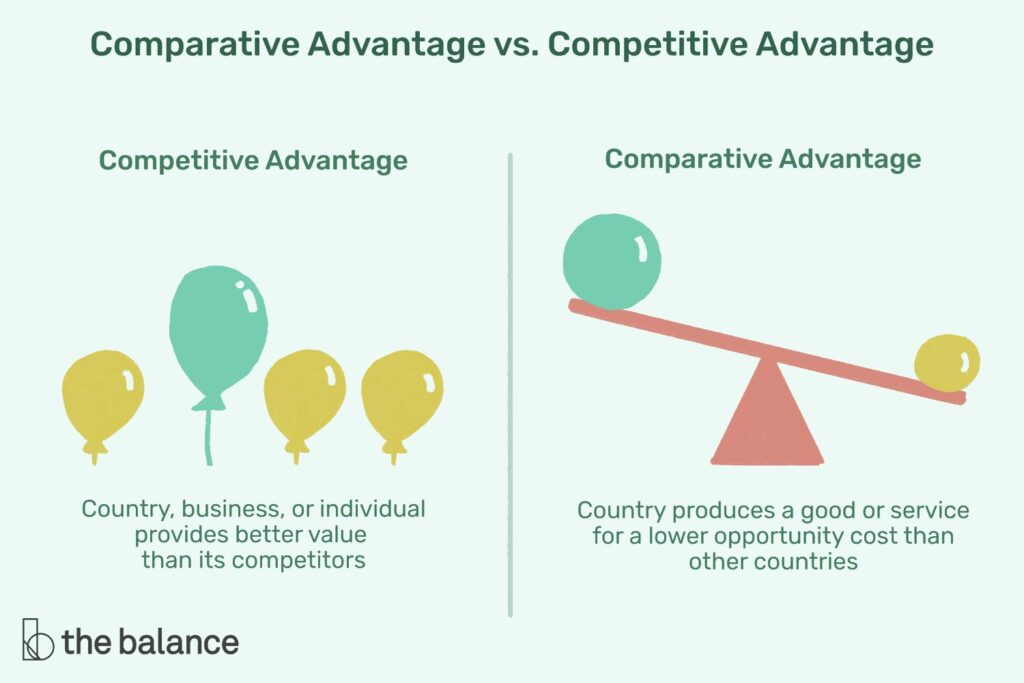
In his Pulitzer Prize winning book, Guns, Germs, and Steel: The Fates of Human Societies, Jared Diamond contends that, “all other things being equal, technology develops fastest in large productive regions with large human populations, many potential inventors, and many competing societies.” What does this have to do with the region’s comparative (or even competitive) advantage in cultural production? Well, first let us replace technology with cultural innovation or cultural creativity as a special case and then recast the statement as: cultural creativity develops fastest in regions with many potential creators and many competing societies. Well, each nation or territory in the region represents a point of cultural innovation, thus CARICOM as a unit doesn’t lack potential creators. Similarly, since most member states are independent countries and historically considerable rivalry has existed among them, the region doesn’t lack competing societies. For proof of that simply look at how the success of the St. Lucia Jazz Festival has led to a multiplicity of similar festivals in the region, seemingly turning it into a hot bed of jazz music. If this bit of extrapolation holds muster, then the regions diversity and multiplicity of states may partly explain its seemingly comparative advantage in cultural production.
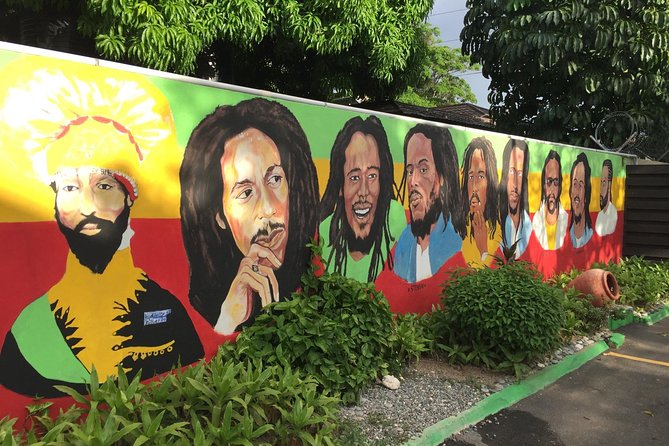
In a previous paper (Cultural Products as Public Goods) I made the case that cultural products can be viewed as public goods and as such calls for public or state support. However, the above discussion suggests that even if cultural products weren’t public goods and even if we decide to run the country as a business, it would still make good business and economic sense to push St. Lucia as a cultural production hub. Perhaps it is that acknowledgement along with Jamaica’s prodigious music production that explains why Kingston, the mecca of Jamaican music, was designated a Music City in the UNESCO Creative Cities Network.
Notes

This article is our second installment on the Youth Economy. The first installment focused on taking stock of the St. Lucia youth economy, defining the youth economy, and highlighting that our youths are in trouble and are desperately in need of an intervention. In subsequent installments, we will detail the role Government ought to play in nurturing potential creators and strengthening the structure of the cultural Industry. We will speak to the imperative that aspiring creators must take greater responsibility for their development and ensuring their export readiness. And we will discuss how government can painlessly raise the requisite funds to support the cultural industry, and also that government should not shy away from engineering the economy.
The Youth Economy Installments
- Taking Stock: The Youth Economy
- The Youth Economy (Part II): Culture as an Engine of Economic Growth
Authors
Alexander Clarke is a business innovator and the founder and CEO of MSOLE. Dr. Anderson Reynolds is an economist and an award-winning author of five books. He is considered one of St. Lucia’s most prominent and prolific writers and a foremost authority on its socioeconomic history.
![]()





